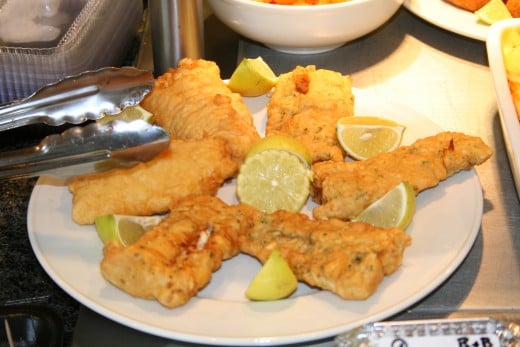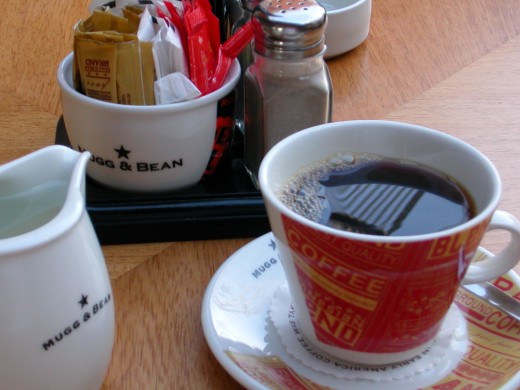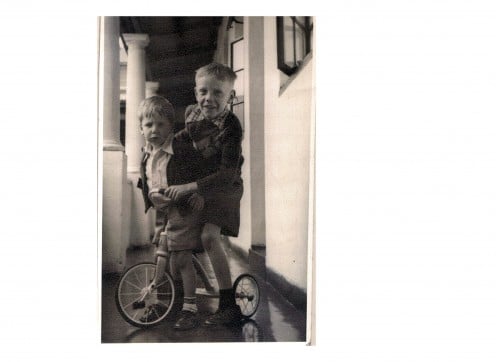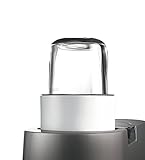Traditional English Style Battered Fried Fish
Friday Afternoon
Many years ago, when I was still quite young. my mother would, on her back from work, stop in at our local fishmonger. There she would purchase several pounds of fish, hake, which had been skinned and deboned.
Note; in those far of days we had such things as local dairies, bakeries, butchers, fishmongers, grocery stored and green grocers, all within a couple of blocks of each other.
It was these shops who sold and stocked up the daily with fresh produce, such as milk, cream, yogurt (natural - not synthetic) butter, buttermilk, etc. I often used to go there during Bob-A-Job week and work in the back, of most of these shops pouring milk into the bottles, or packing shelves, sweeping floors, weighing rice, and sugar. there is another Hub in those memories alone.
On arriving at home with the fresh fish
The first thing my mom always did was to place the fish into a large basin of slightly salted water, this was just to make sure that all the small bits of loose fish would come off and also to ensure that it was nice and clean.
After being soaked for ten minutes, the fish would be removed, patted dry with clean mutton cloth and placed on clean mutton cloth to dry off. Today we would use roller towel for that purpose. The fish was then placed into the refrigerator.
The Kenwood would be hauled out of the cupboard, the other items which would be needed such as the milk, eggs and flour, were to removed from the fridge and the storage bins, placed on the working surfaces, this was my responsibility.
I then would connect up the Kenwood and attach the whisk beater, then after the mixing bowl was rinsed and dried we were all set and ready to go.
Golden Batter Fried Fish

The Making of that Magical Batter
The exact quantities were never actually measured out as my mother worked this recipe entirely by practised feel, yet she was always able to calculate the correct volumes for what was needed. This was also allowing enough left over to make up a snack of battered bread for the kitchen staff, Ma and me.
I will try and put it together with some measures, but these would be a matter of guess work, you will have to be flexible with this as the exact balance, in the end, is more important to its than its detailed composition.
The Ingredients
Enough batter for a couple of Kilograms of filleted and deboned hake, or any other white fish. This was always the case as my dad would not eat a brown meat fish. This is actually a batter that can be used for any fish that you would like battered and deep fried.
Ingredients for the batter
- 2 to 3 Cups of white flour
- 2 eggs
- a liter of Milk
- Salt and Pepper to taste
The Mixing of the Batter
First a couple of cups of flour would be sieved into the mixing bowl, to stop any strange bits and pieces that might have slipped in, during the flour packaging process, also this process adds air and gives your finished product a lighter texture.
The Kenwood would be switched on and set to a medium speed, it would remain running for the duration of the following steps.
- We have the flour being mixed dry and its own.
- Then the an egg would be cracked and emptied into a saucer, to check the egg for freshness and to remove any bits of egg shell or blood spots, once past the inspection it goes into the mixing bowl, then the next egg would undergo the same treatment.
- A good pinch of salt would be added to the bowl.
- A good pinch of ground white pepper would also be added.
Now for the tricky bit. With the mixer still running, my mom would slowly add the milk in a slow steady stream, allowing the milk to be mixed into the egg and flour, until the mixed batter was nice and thick, not too runny and not like a glue.
- Every now and then she would stop the mixer, lift up the beater head and then observe the way the mixture would drop off the whisk and settle on the surface of the batter.
- The ideal batter should be thick, slightly runny and:
- not splash when landing on top of the mixture in the bowl,
- it also should not lay on the surface of the mixture for too long before disappearing.
- Finally the batter should have a healthy shine to it, this shows that the individual ingredients are well blended through the entire mixture.
If the batter needed more thickening she would mix some flour in a cup with a bit of milk whisk until combined and add it to the batter, adjusting her mixture until the batter met her standards,this did not happen to often, as I have stated previously.

Putting the Days Catch on the Table
The roasting tray of our oven would be brought out, rinsed and dried very thoroughly, this then would have a cup or two of flour emptied into it.
The fillets of fish would be brought out and cut into sections across its length, my mom was very scientific about this and would use the width of ner hand as the measure of length, she always started at the top end of the fillet and worked down to the tail.
The short tail end pieces were placed to one side and we would use them for a different purpose.
Our deep frying pan was placed on the stove top with fresh cooking oil, the plate switched on, the hot plate of the food warmer was switched on and set to medium high. A deep dish with draining paper was standing by and ready to receive the catch. Now we were really cooking!!
The pieces of fish, that were the correct length, would then under go the final stage of preparation.
- Firstly Dredged into the flour and coated on on all sides.
- Dipped into the batter so that it was completely an evenly coated in batter.
- Carefully lifted and placed into the hot oil. The same temperature that you fry chips or thick fries in.
- As soon as it rose to the surface of the oil, turned over and allowed to cook for the same length of time on the other side
- Removed from the oil, and placed into the draining dish
- So the process would continue until all the fish had been processed.
The fish would then be soft and succulent inside with a crisp golden brown batter on the outside. This was kept on the food warmer while the potatoes were pealed and sliced into fries or chips. Deep fried to a golden brown, placed into a serving dish.
If our timing was correct the rest of the family would be home, my brother from his sport, chess or debating, my dad from work.
We would then be ready to serve up and enjoy a piping hot fresh plate of Fish and Chips.
The Next and Most Important Step
The batter was removed from the Kenwood, the fish was chilling in the refrigerator. We covered the batter an let it rest. While washing the dishes and tidying up the kitchen, I would put on the kettle to make a cup of coffee, which we would drink in the dining room, my mom would have a cigarette, , then we would be on to the next task.
On reflection, I am convinced that my love for coffee, has its origin from those days way back then, when my mother, as she, at every opportunity would make, or have me make some coffee or tea.
As parents were the superintendents for a block of flats in the centre of Hillbrow, we would very often have the tenants coming in and out, with various queries, and often, just to visit as my mom and dad were very gregarious and easy to get along with. If I was at home, I would be the designated coffee and tea maker, therefore, I would invariable consume a fair amount of coffee during the course of an average afternoon.
Especially when we were busy in the kitchen.
My Brother and I
This was taken when I was three years old and my brother a tad bit over six years old.
What About Those Tail Ends
The birth of fish cakes
The bits of tails that did not make it to table as batter fried fish, well these would simply be minced up together with a potato and an onion, as well as some bread crumbs.
They would be then be rolled into balls about the size golf balls, flattened out into a patty, coated with crumbs and fried.
They would be placed in the refrigerator for another meal, either cold or heated up. Usually the would end up as fish burgers for lunch after school.
Battered Bread and Jam
Most times there was sufficient batter left in the basin, then I would cut some bread at least an inch and a half thick, coat this with the batter and fry until golden brown on both sides.
Drain quickly and spread a thick layer of apricot or peach jam on one side. This would always do for pudding.











